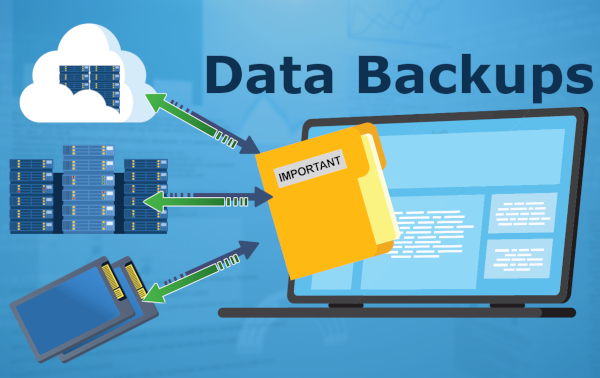It goes without saying that your data is a vital part of your business. If the sorst happens and you lose all or part of your data, you could be out of business for a while, or maybe even for good.
But many businesses do not completely understand how to protect their valuable data. It is not complicated, but you need to understand the two most basic data protection methods: backups and archives.
In this article, we’ll explain the differences between backing up and archiving your data, and why each is important.
What Is a Data Backup?
A data backup protects the data by keeping a copy in a secure location so you can restore it quickly if it gets lost or damaged.
You need to consider three key things when you design your backup strategy.
- The changes you have made to your data since your last backup are at risk because they are not yet backed up. So, you need to think about how much data you can afford to lose when you create your backup schedule. You might decide to back up daily, hourly, or even more frequently. It is a trade-off between your needs and the costs involved.
- You need to keep your backup in a secure location away from your data to protect it from theft, malware attack, vandalism, fire or water damage. Do not keep the backup copy on the premises or attached to your network as that is not going to help you if the building burns down or you get hit with ransomware.
- You need to be able to quickly restore your data from the backup. Time is money, especially when your systems are down, and the longer it takes to bring your systems back up, the more business you stand to lose.
What Is a Data Archive?
A data archive stores data that you do not need access to every day but might need in the future. It is like putting your old paper files in boxes and storing them in the basement while you keep your active files within reach. Some examples could be tax records, bank transactions, old employee information and any records required for regulatory compliance.
Archiving moves this data out of your common area and stores it offline so it cannot be modified intentionally or accidentally. Just like a backup, it needs to be in a secure location away from your main data storage.
Do You Need Both a Backup and an Archive?
Small business users might be able to get away without an archive because they usually have much less data than larger businesses. That means you can keep your archived data and work data together in a backup.
For larger business or those that need their old archive data not to be easily modified, it is best to use both a backup and an archive. A backup is much faster and easier to restore than an archive because it uses high-speed storage devices such as fast hard disks or flash disks. This keeps downtime to a minimum after a data loss.
On its own, an archive won’t do the job for either a business or an individual. An archive contains only the part of your work data that needs to be kept long-term. Plus, it is not performed often enough, so a lot of your work data is at risk of being lost. Finally, it can be slow to restore, so your systems might be down for a while.
Creating a Strong Data Backup and Archiving Strategy
A lot goes into a good backup and archive strategy, and it is critical that you get it right. You do not want to discover that you are missing data after a data loss or when you need records for compliance.
We can provide you with a solution to protect against data loss. If you are in Australia, contact us to learn more about designing a tailored backup and archiving solution that is best for your business.

